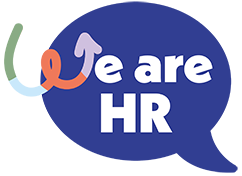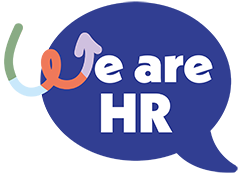Table Of Contents
The technology that employees rely on can significantly impact their productivity, satisfaction, and mental health. When systems function smoothly, they empower teams to excel. However, frequent disruptions like crashes, slow systems, or connectivity issues can derail efficiency and harm overall wellbeing.
At a time when businesses are striving to retain top talent, addressing these technology challenges is critical. Ensuring a seamless Digital Employee Experience (DEX) is not just about fixing issues—it’s about proactively creating an environment where employees can thrive without unnecessary tech frustrations.
The Hidden Costs of Technology Frustrations
Research shows that technology issues such as system crashes, sluggish performance, and connectivity problems account for the majority of IT support queries. These seemingly small frustrations can snowball into significant disruptions that affect productivity and employee morale.
Common Technology Issues Include:
- Hardware Failures: Power issues, boot failures, and device malfunctions are among the leading causes of IT complaints. These problems hinder work and can lead to missed deadlines and project delays.
- Software Challenges: From installation errors to compatibility issues, software-related frustrations affect nearly a quarter of IT support requests. These problems often result in wasted time and heightened stress levels.
- Data Loss and Security Concerns: Data corruption, lost files, and insufficient cybersecurity measures not only disrupt work but can also have long-term repercussions for both employees and businesses.
- Remote Connectivity Problems: For remote and hybrid workers, unreliable internet and network issues are particularly frustrating. These challenges disrupt communication, collaboration, and overall productivity.
Understanding the Digital Employee Experience (DEX)
The Digital Employee Experience refers to how employees interact with workplace technology. A positive DEX ensures employees can efficiently perform their tasks without encountering barriers. Inadequate DEX can cause employees to view their organisation as unresponsive or disorganised, leading to decreased engagement and higher turnover.
Why DEX Matters:
- Productivity Impact: Employees who struggle with technology waste valuable time. This inefficiency can directly affect company revenue and output.
- Employee Morale: Persistent IT issues can make employees feel unsupported, reducing job satisfaction.
- Retention Risks: Organisations that fail to prioritise DEX risk losing talent to competitors with better technology environments.
In today’s competitive job market, businesses that excel in providing a smooth digital experience will have an edge in attracting and retaining top talent.
The Impact of IT Failures on Employee Wellbeing
Technology frustrations don’t just disrupt workflows—they also affect mental health. Persistent issues can lead to stress, frustration, and even burnout. Employees who face frequent disruptions may feel undervalued or unsupported, which can decrease loyalty and increase absenteeism.
The Ripple Effect of Bad IT:
- Stress: Repeated disruptions heighten stress levels, especially when employees are under tight deadlines.
- Reduced Collaboration: Connectivity issues and slow systems hinder teamwork, isolating employees and limiting communication.
- Customer Experience: When employees are frustrated by their tools, their mood can impact customer interactions, leading to poor service and lost business.
Shifting to Proactive IT Solutions
To mitigate these challenges, businesses must transition from reactive to proactive IT strategies. By leveraging tools like Artificial Intelligence (AI) and real-time data analytics, organisations can anticipate and resolve issues before they escalate.
The Future of IT Support Includes:
- Real-Time Monitoring: AI-powered systems can detect anomalies and performance drops, allowing IT teams to address problems instantly.
- Self-Healing Tools: Predictive solutions can automatically fix minor issues without interrupting the user, ensuring a smoother experience.
- Empowered Employees: Self-service platforms enable employees to resolve common tech issues independently, reducing reliance on help desks.
Investing in proactive IT not only enhances DEX but also fosters a more productive and satisfied workforce.
Tips for Improving the Digital Employee Experience
- Invest in Predictive IT Solutions: Use AI to anticipate and resolve issues before they affect productivity. Proactive monitoring ensures a stable digital environment.
- Enable Self-Service Tools: Provide employees with intuitive platforms to solve minor tech problems on their own, reducing frustration and downtime.
- Focus on Connectivity for Remote Teams: Ensure robust network solutions to support remote and hybrid workforces. Visibility into network performance can prevent disruptions.
- Streamline User Experiences: Implement user-friendly systems that require minimal training. Employees are more likely to stay engaged when their tools work seamlessly.
- Automate Updates and Compliance: Prevent outdated systems by using automated solutions to ensure devices stay current and secure.
- Gather Feedback Regularly: Actively listen to employees about their tech challenges and use their insights to refine IT strategies.
Why Businesses Must Prioritise Seamless Technology
A positive Digital Employee Experience is no longer optional—it’s essential. By addressing technology frustrations, businesses can improve productivity, enhance employee wellbeing, and boost retention. Investing in proactive IT strategies not only resolves current issues but also prepares organisations to meet the future needs of an increasingly tech-reliant workforce.
Technology should empower, not hinder. With the right systems in place, businesses can create an environment where employees feel supported, motivated, and equipped to perform their best.
Conclusion
In today’s fast-paced world, ensuring a seamless digital experience is critical to employee success and organisational growth. By shifting to proactive IT solutions and prioritising the Digital Employee Experience, companies can prevent technology frustrations from becoming barriers to performance and wellbeing.
Investing in the right tools and strategies isn’t just about solving problems—it’s about creating a workplace where employees can thrive.


